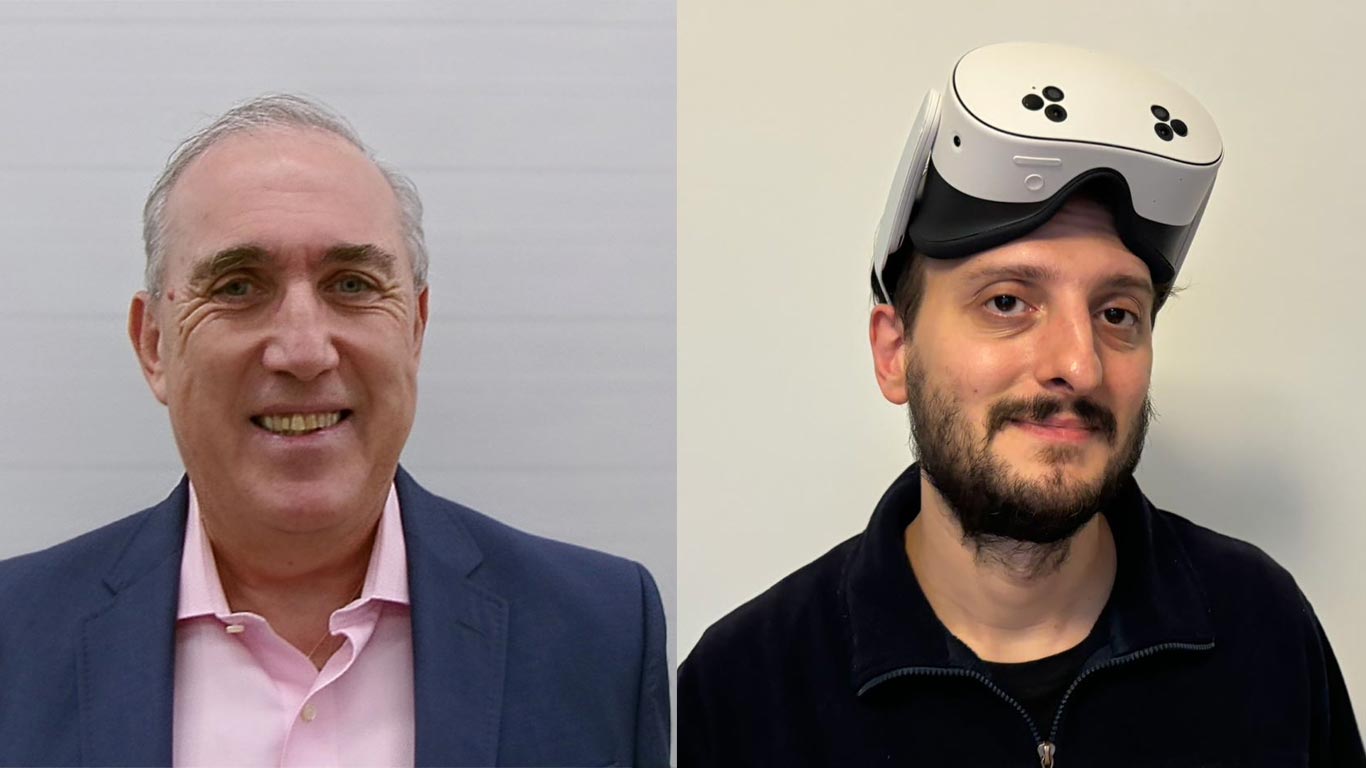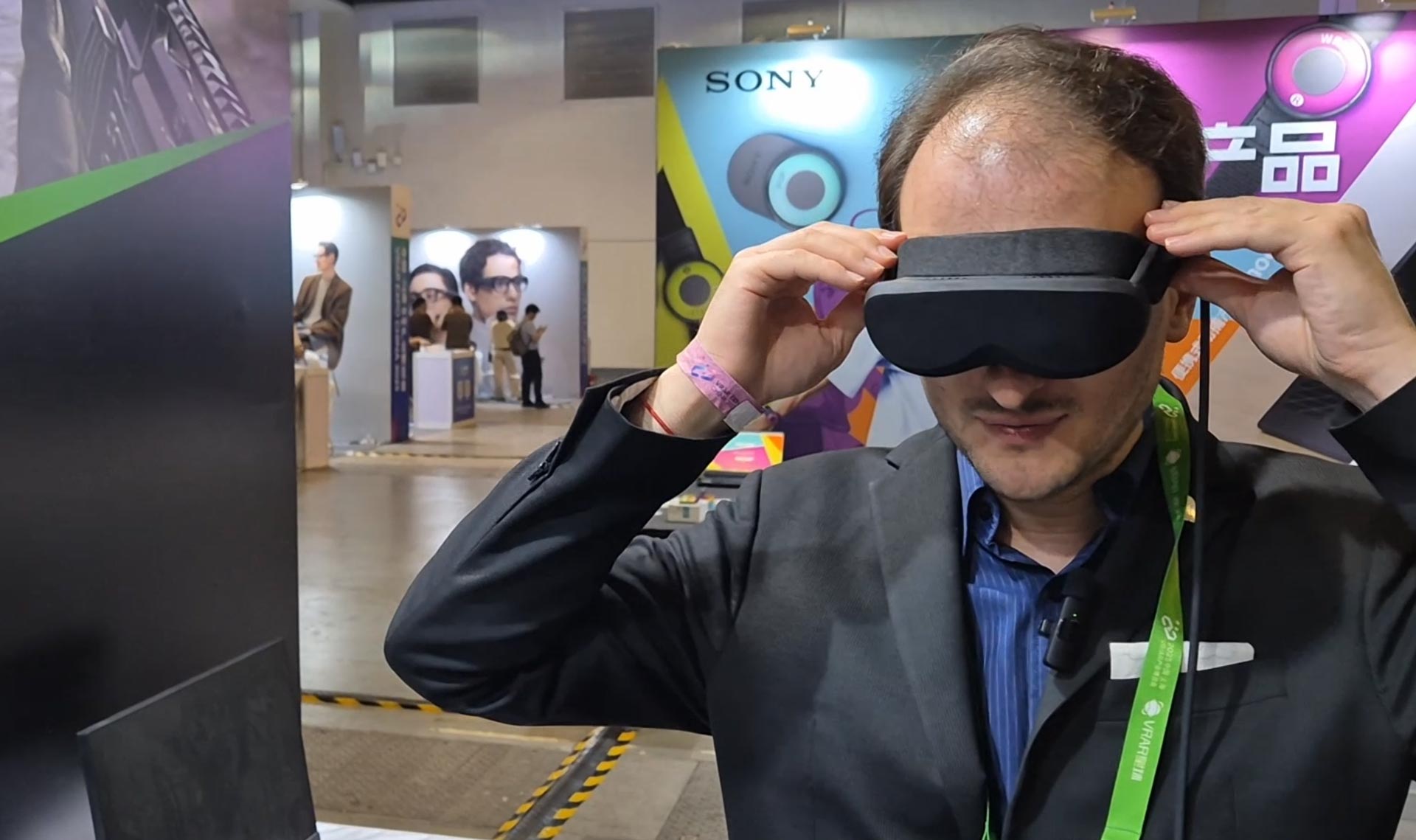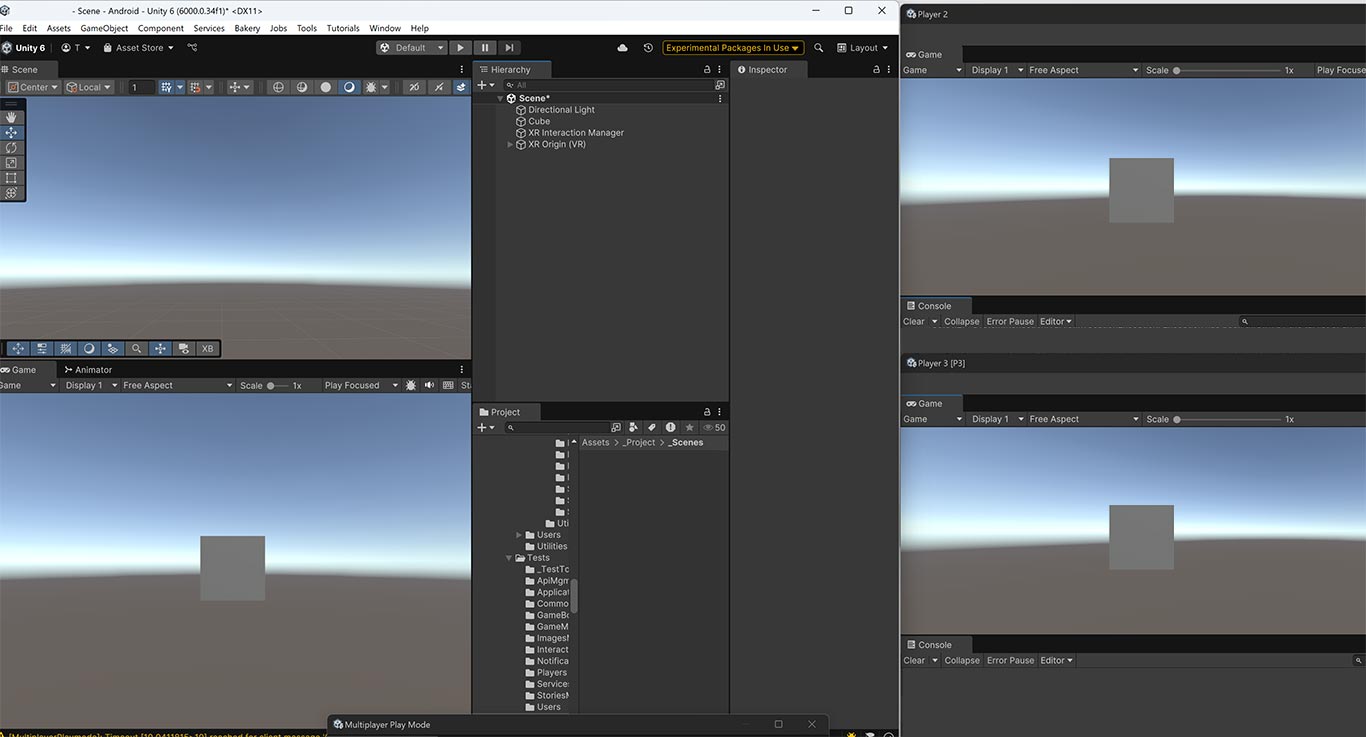A chat with Grigore Burdea about the past, the present, and the future of VR
On the occasion of the release of his latest book about VR, I had the honor of interviewing Dr. Grigore Burdea about his last 30 years of work in Virtual Reality and talking about the present, the past, and the future of this technology. The interview spanned various interesting topics like motion sickness, scent emulation, and neural interfaces.
Who is Grigore Burdea?

Dr. Grigore Burdea is an esteemed professor and researcher about immersive realities. This is the short bio that IEEE wrote for him:
Dr. Grigore (Greg) Burdea is the author of Virtual Reality Technology and Professor Emeritus in the Department of Electrical and Computer Engineering at Rutgers University. He was Valedictorian at the Technical University of Bucharest (Romania) and subsequently graduated with a PhD from New York University (USA). Dr. Burdea is recognized internationally for his pioneering work on Haptics (the sense of touch) for Virtual Reality, and subsequently for transformative research on Virtual Reality use in Medicine. He is author of several other books on virtual reality, as well as an inventor and entrepreneur. Dr. Burdea is the recipient of the prestigious IEEE Virtual Reality Career Award (the highest in the field), Fellow of the IEEE Virtual Reality Academy, and Founder of the International Society on Virtual Rehabilitation.
As you can see, he’s someone with a long and deep experience in the field: he wrote his first book about VR in 1993!
My interview with Grigore Burdea
You can watch the integral chat I had with Dr. Burdea in the video here below:
In the video, you can enjoy a very friendly chat between him and me where he also tells some nice stories from his life. I think it’s very nice to watch. But if you are in a hurry and want just to get the most important lessons you can learn from him, I’ve extracted a few of them and put them in the paragraphs here below.
Tidbits from the interview
Haptics for military use
Dr. Burdea worked a lot in the haptics sector because he comes from the robotic field. At the beginning of the interview, he tells a very interesting story about a haptic system through which a general could check the status of the troops near the battlefield. He could take an object representing a tank unit and squeeze it and if the object felt soft, the unit was decimated or not ready to battle, while if it felt hard, then the unit was ready to attack the enemy. The advantage of using haptics is that it doesn’t involve any vocal conversation, so the communication is harder to be intercepted by the enemy. This is a very smart tactic.
What has not changed in the last 30 years in VR? Humans

When I asked him what has changed and what has not in the last 30 years in VR, he said that many things have changed, especially the computational power of the devices, but the most important thing that has not changed is human beings. He said “The human user is part of the VR system, the loop closes with the human” to highlight how it is important to consider people at the center of the VR experience.
… and motion sickness
Motion Sickness is still a problem haunting all the users of virtual experiences and something that is limiting the penetration of Virtual Reality. Not much has changed over the years and there is still a lot to do to solve this issue.
Motion sickness and the gender issue
There are articles online claiming that VR may be a discriminating technology because women suffer from motion sickness more than men. According to Mr. Burdea, though, this is not true: there is not a gender issue in the technology but in the products. Headsets are mostly manufactured for men, so they are made to fit with the shape of men’s heads and have IPD that are mostly compatible with men’s eyes. This means that a higher percentage of women don’t find a perfect fit with the ergonomics of the device and this means that a higher percentage of women will have an experience of discomfort with VR. I seriously hope that the more we go on, the more this issue will be solved, by making headsets that are more ergonomic for everyone, so that everyone can enjoy a more comfortable experience.
Deep dive into olfactory systems

Olfactory systems are something that have changed a lot in the last 30 years, instead. 20 years ago they were something very experimental, almost esoteric, while now it is a developed technology. When I asked Dr. Burdea when we can have olfactory systems ready for consumer VR, his answer was “We already have them”. He said now the main problem is the commercialization. The companies offering VR smell accessories are small and limited, so they can not push these products much into the market. Plus, there is a big problem with content: since VR scent systems are not widespread, no developer is integrating them into VR games. Being no content, there is no demand for the devices, starting the usual vicious circles that can only be broken by heavy investments in the VR scent sector by a big company (like Meta) that can fund content using it.
It would be great to integrate smell into VR experiences because smell is a very important sense that can elicit many sensations in us: for instance, if you perceive the smell of lasagna, you get hungry. If you are playing a game like Gorn, you can have fun by doing some splatter kills, but imagine if you would play a VR experience where you could feel the smells during a battle… it would be pretty disgusting. This proves the importance of this sense. He said that there are also experiments in Germany about making paintings that emit scents to make the painting more suggestive and to make people remember it more. For instance, a painting about the family of a farmer eating could make you feel the smell of the traditional food they are eating, so you feel more immersed in the scene.
One of the great difficulties of smell emulation is that there are no primary smells: you can reconstruct all colors using Red, Green, and Blue (on a screen), but there is no way to reconstruct all scents starting with a small subset of them. This is why for every smell you need in your VR experience, you need a specific cartridge with the liquid emulating that specific aroma. Anyway, some Japanese researchers have been able to work on “Olfactory maps”, that can improve this issue.
These researchers made this simple test: they made people see some objects and simultaneously perceive a perfume. Sometimes the two things were coherent, other times, not. For instance, sometimes people could see an apple and feel the scent of fresh apples, while other times they could see oranges and feel the smell of apples. What they noticed is that depending on how much the scent you feel and the scent you imagine you should perceive (from what you see) are similar, your brain may be tricked into believing that the scent you are feeling is the correct one. Let me explain this better with an example: if you see an apple, but you feel the scent of petroleum, of course, your brain identifies two different things: an apple you see and some petroleum that is overriding the perfume of the apple that you should see. But if you see apples and there is the smell of oranges, your brain may identify the smell of oranges as the smell of the apples. So you see apples, and you believe that you smell apples. The finding is that there are some smells that can be used to emulate the scent not only of the object they represent but also of the objects whose smell is close enough, that is close to it in the olfactory proximity map. This helps reducing a lot the number of needed smells, because for instance with the smell of apples, you can emulate the scent of various fruits in a VR experience.
This is possible because not all senses are treated equally by the brain: vision is the one with the most importance. If other sensory channels (e.g. olfactory) present information that is slightly conflicting with the visuals, the brain can suppress to some extent this information from other channels because of how important vision is.
Taste is not developed, yet
I tried to ask him multiple times about taste emulation and he said that there are some experiments, but today it is a technology that is in too early stages.
Neural interfaces are inevitable

Dr. Grigore Burdea is a big believer in neural interfaces and brain implants. He sees them as the future of technology and also the future of immersive realities. Instead of having bulky devices around all our senses, it’s much easier to communicate directly with the organ that manages all our perception, that is the brain. This would allow us to have the perfect virtual reality, because we could read all the inputs directly from the brain, without needing trackers and gloves, and provide all the outputs to the brain, without needing headsets, scent emitters, tasting devices, etc…
He’s very intrigued by the work that Elon Musk is doing at Neuralink and also by his recently announced Pi Phone, a smartphone that could connect with the Neuralink interfaces. Of course, Dr. Burdea is aware of the controversial nature of having something in our brains because it introduces huge problems of privacy, control, etc… But on the purely technology side, brain interfaces are the future.
When I asked him when neural interfaces are going to happen, and if it is something that we have to wait 50 years to be a reality, he answered me that they are going to happen “sooner than we think”. He added that while it sounds scary to have chips in our brains, as soon as someone starts using them and having an unfair advantage at work or at school, many others will start implanting them not to lag behind their competition.
VR and the help with medicine
When I asked my usual open question at the end of the interview, he said he wanted to mention the use of VR for medicine and rehabilitation. He said that medicine regarding some things is still in the “stone age” and new technologies may come to the rescue. He cofounded ISVR (International Society on Virtual Rehabilitation) and he saw with his eyes rehabilitation procedures using VR helping people move again hands, legs, and other parts of the body even when more traditional doctors said that it was not possible. He says there is a lot of potential for VR and medicine and invites everyone to study this more.
Other VR-related tidbits
Two other VR-related topics are worth a short mention:
- If you are a researcher, you are experimenting with scent or smell in VR and you have to test your solution on some users, he suggests you be careful about allergies. If one of the users is allergic to the element whose scent you are emulating, he may have an allergic reaction to it
- VR can also cause addiction, especially when it is used in fields that are already addictive: cybersex is an example of it. According to a study by HTC, VR is 44% more addictive than flat gaming, for instance. This is something we should be careful about when the technology will be more widespread. By the way, this topic is the one through which Dr. Burdea and I got in touch a few months ago.
Some professional suggestions
Technology apart, Dr. Burdea also gave three suggestions for our professional lives:
- “One key thing in business is to speak the language of the people you are trying to do business with“, to show you go the extra mile and you respect them. So if you want to do business with someone from another country, learn at least some words of their language. They will love it
- “When you write, remember that you don’t write for you, but for others“. This is an invite to write in a clear way, so others can understand what you are saying. He also invited everyone to write in an unbiased way to provide objective information to your readers
- “Progress happens when you take two people that don’t usually speak to each other, you put them together in a room and give them a task“. And this is how VR and medicine could grow together, for instance.
I hope you liked this interview and the many lessons that the experienced Prof. Burdea taught us. I thank him a lot for the time he has dedicated to me and I invite you all to check out his last book. And of course, if you reshare this article on your social media channels, you will also make him happy…
(Header image composed using an image by IEEE)
Disclaimer: this blog contains advertisement and affiliate links to sustain itself. If you click on an affiliate link, I'll be very happy because I'll earn a small commission on your purchase. You can find my boring full disclosure here.



